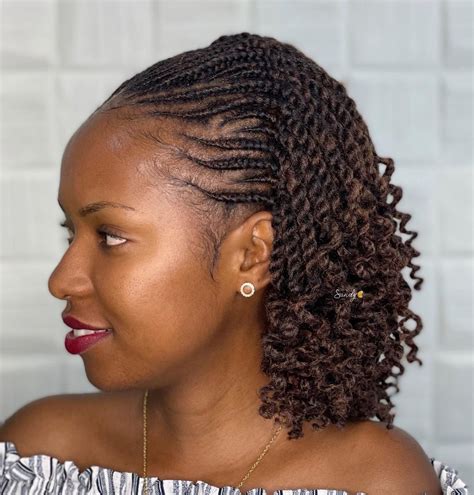Introduction
Braiding, an ancient art form, has evolved into a versatile technique that empowers individuals to express their creativity and enhance their style. Selecting the ideal braiding hair is crucial for achieving stunning results that last. This comprehensive guide unveils the best braiding hair options, providing essential information to help you make informed decisions.

Types of Braiding Hair
Natural Hair
-
Advantages:
- Blends seamlessly with bio hair
- Versatility in hairstyles
- Protects natural hair from damage
Synthetic Hair
-
Advantages:
- Affordable
- Wide range of colors and textures
- Heat-resistant (in some cases)
Materials for Braiding Hair
Human Hair
- Brazilian: Known for its durability and natural shine
- Peruvian: Soft and silky with minimal tangling
- Indian: Thick and voluminous, suitable for intricate styles
Kanekalon
- A synthetic material that mimics human hair texture
- Available in various colors and lengths
- Heat-resistant up to 400°F
Toyokalon
- A high-quality synthetic fiber that resembles human hair
- Soft, lightweight, and tangle-resistant
- Heat-resistant up to 350°F
Choosing the Right Braiding Hair
Consider your hair texture and length: Match the texture and length of your natural hair to the braiding hair for a seamless blend.
Determine your desired style: Different braiding styles require different textures and lengths of hair.
Evaluate the quality: Opt for high-quality hair that is tangle-free, durable, and resistant to damage.
Choose the right color: Select a color that complements your natural hair or creates a contrasting look.
Top Braiding Hair Brands
- X-Pression: Renowned for its premium Brazilian and Peruvian human hair
- Darling: Offers a wide range of synthetic hair options with exceptional quality
- Milky Way: Specializes in synthetic hair that mimics natural textures and colors
- Remy: Provides 100% human hair extensions with Remy grade, ensuring no tangles
- Freetress: Known for its affordable synthetic hair that comes in various styles and colors
Table 1: Comparison of Braiding Hair Materials
| Material | Advantages | Disadvantages |
|---|---|---|
| Human Hair | Natural look, versatile, durable | Expensive, requires special care |
| Kanekalon | Affordable, wide range of options | Synthetic feel, heat-sensitive |
| Toyokalon | Soft, lightweight, tangle-resistant | Less durable than human hair |
| Faux Locs | Protective, easy to style | Can be heavy, may cause hair breakage |
Table 2: Best Braiding Hair for Different Hair Types
| Hair Type | Recommended Braiding Hair |
|---|---|
| Fine Hair | Synthetic hair (Kanekalon, Toyokalon) |
| Medium Hair | Human hair (Brazilian, Indian) |
| Thick Hair | Human hair (Peruvian), synthetic hair (Jumbo Braid) |
| Curly Hair | Human hair with extensions (clip-ins, sew-ins) |
Table 3: Braiding Hair Care Tips
| Tip | Description |
|---|---|
| Use hair moisturizer | Keep hair hydrated to prevent dryness and tangles |
| Avoid over-brushing | Gentle brushing is sufficient to remove knots |
| Sleep with a satin bonnet | Protect hair from friction while sleeping |
| Use a clarifying shampoo | Remove product buildup and dirt without stripping natural oils |
| Trim split ends | Prevent breakage and maintain healthy hair growth |
How to Braid Hair Step-by-Step
Step 1: Prepare the hair Brush and detangle both natural and braiding hair.
Step 2: Section the hair Divide the hair into workable sections to facilitate braiding.
Step 3: Start braiding Secure the braiding hair at the base of a natural hair section.
Step 4: Cross over Bring the right section over the middle section.
Step 5: Cross under Bring the left section under the middle section.
Step 6: Tighten Pull the sections snugly against the scalp to create a tight braid.
Step 7: Repeat Continue braiding until the entire section is complete.
Step 8: Secure Use a hairband or scrunchie to secure the end of the braid.
Tricks for Enhancing Braids
- Add extensions: Use hair extensions to enhance volume, length, or add color.
- Create variations: Experiment with different braiding techniques (e.g., cornrows, box braids, locs) to create unique styles.
- Use hair accessories: Beads, charms, and ribbons can elevate braids and add a touch of glamour.
- Moisturize regularly: Apply hair moisturizer to keep braids hydrated and tangle-free.
- Protect from weather: Wear a hat or scarf to protect braids from the elements.
Conclusion
Choosing the best braiding hair empowers individuals to explore their creativity, achieve stunning hairstyles, and express their unique style. By carefully considering the type, material, quality, and care of braiding hair, you can create flawless braids that enhance your confidence and make a statement.
